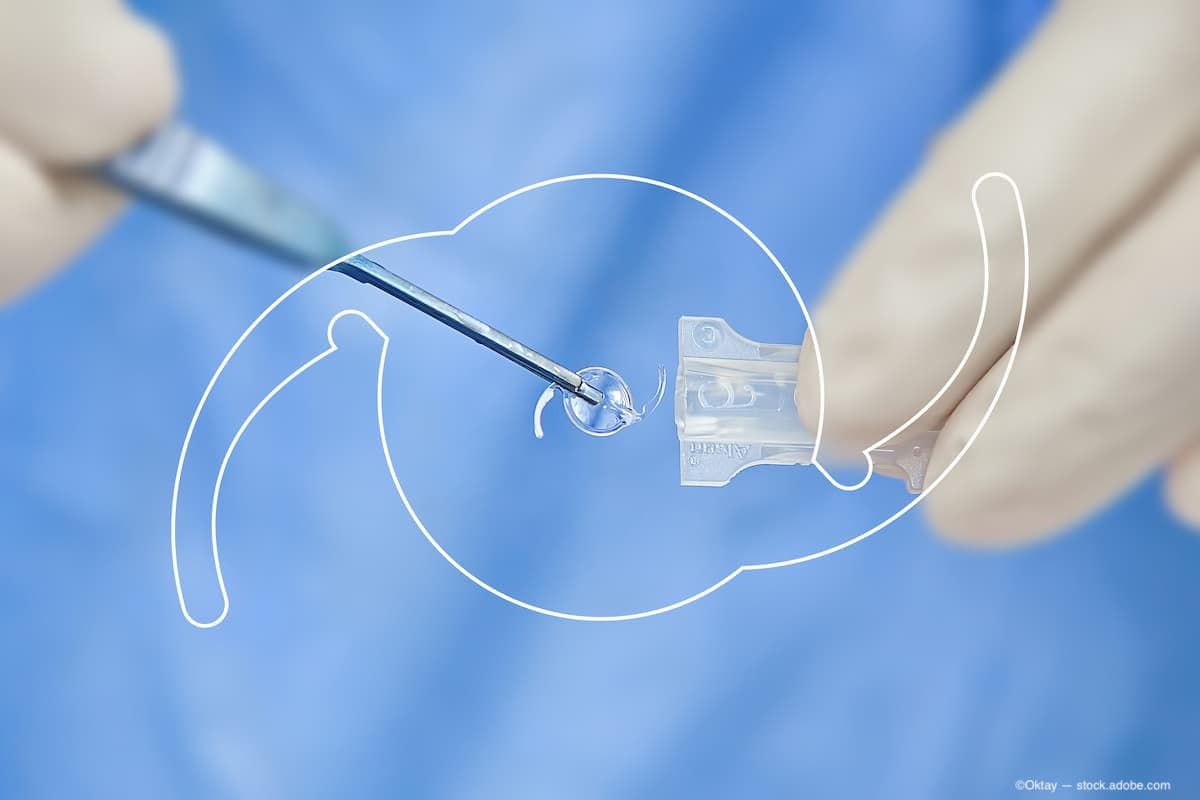Article
Glued IOL technique favored for securing dislocated IOL
The glued IOL technique introduced by Amar Agarwal, MD, is an effective method for repositioning a dislocated 3-piece IOL in eyes without adequate capsular support, and it has advantages compared with suturing, according to Eric D. Donnenfeld, MD, founding partner, Ophthalmic Consultants of Long Island and Connecticut, Garden City, NY.
Watch as Eric D. Donnenfeld, MD, demonstrates how the glued IOL technique is an effective method for repositioning a dislocated 3-piece IOL in eyes without adequate capsular support. (Video courtesy of Eric D. Donnenfeld, MD)
The glued IOL technique introduced by Amar Agarwal, MD, is an effective method for repositioning a dislocated 3-piece IOL in eyes without adequate capsular support, and it has advantages compared with suturing, according to Eric D. Donnenfeld, MD, founding partner, Ophthalmic Consultants of Long Island and Connecticut, Garden City, NY.
Related news: Novel trifocal IOL extends range of vision
Based on his favorable experience using the glued IOL technique, Dr. Donnenfeld said it has become his preferred approach for repositioning a dislocated IOL.
“With the glued IOL technique, the IOL almost always centers perfectly, and I have not seen any IOL tilt, which can occur after suturing a dislocated IOL,” Dr. Donnenfeld said.
Recent news: Device providing highly accurate real-time IOL power confirmation
“Long-term follow-up in more eyes is needed to assess the durability of a glued dislocated IOL. However, since I began using this technique two years ago, positioning of the IOLs has been consistently stable.”
Surgical technique
Surgical technique
Using a crescent blade, the first step is to create two scleral flaps 180° apart and then create two sclerotomies 1.5 mm posterior to the limbus and under the scleral flaps using an MVR blade. After placing a dispersive ophthalmic viscosurgical device (OVD) into the anterior chamber and an anterior chamber maintainer to prevent collapse of the globe, pars plana vitrectomy is performed to separate vitreous from the IOL, taking care to avoid exerting vitreous traction. Dr. Donnenfeld noted that he injects triamcinolone to help demarcate vitreous and simultaneously control postoperative inflammation.
Related: Imaging, 27-gauge systems capture retina surgeons’ focus
Using a forceps in a tire-iron technique to grab one haptic and push the optic from behind, the IOL is brought up into the anterior chamber in front of the iris. After placing more OVD in front of the lens, capsular material (Soemmerings ring) and remnant cortex are removed. Tissue that is not easily pulled away manually can be removed using vitrectomy in the irrigation and aspiration mode, which is performed with a lower cutting speed of 200 cuts per minute and higher vacuum of approximately 150 mm Hg.
Surgical technique (cont.)
Using two micro-forceps introduced into the eye through a limbal incision and one of the sclerotomies, the handshake technique is used to pass one of the haptics from the anterior chamber into the posterior chamber for externalization through the sclerotomy. After the first haptic is externalized, Dr. Donnenfeld uses a technique taught to him by Roger Steinert, MD, in which he attaches a silicone retention slider from an iris hook onto the end of the externalized haptic. This prevents its slippage while he repeats the handshake technique to grasp and deliver the second haptic through the sclerotomy on the opposite side.
Recent news: New techniques centering on capsulotomy creation
“Using the retention slide to retain the haptic avoids the need for it to be held by an assistant, a maneuver that in my experience inevitably results in crinkling of the haptic,” Dr. Donnenfeld said.
Once the haptics are externalized, they are placed into a scleral incision adjacent to the scleral flap. Then, the anterior chamber maintainer is removed and the scleral flaps and conjunctiva are fixed over the pockets with a small amount of fibrin glue.
This article is based on a presentation given by Dr. Donnenfeld at the 2015 annual meeting of the American Academy of Ophthalmology.
Eric Donnenfeld, MD
E: ericdonnenfeld@gmail.com
Dr. Donnenfeld has no direct financial interest in the technique he described.
Newsletter
Don’t miss out—get Ophthalmology Times updates on the latest clinical advancements and expert interviews, straight to your inbox.





